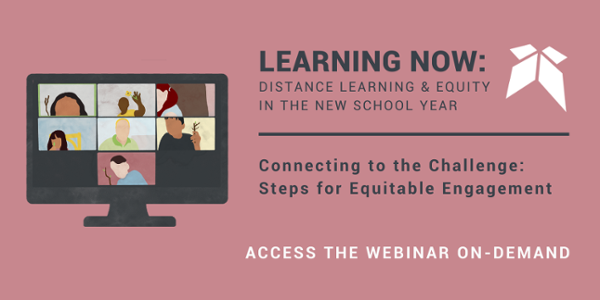Student engagement is one of the most overused terms in education. We talk about engagement in the classroom, between peers, with families, with the content, and now, virtual engagement. Engagement is certainly important if we talk about it this much, but what does it really mean?
A 2018 Gallup poll looked at data from over 5 million surveys over the course of 12 years. It defines engagement as, “a measurement of how involved, enthusiastic and committed one is to an organization.” The same study found that, “engaged students are 2.5 times more likely to say that they get excellent grades and do well in school, and they are 4.5 times more likely to be hopeful about the future than their actively disengaged peers.” Despite its potential impact, student engagement is on the decline. Less than half of students are engaged in school with 29% of students responding they are “not engaged” and 24% responding they are “actively disengaged.”
Engagement is not optional when students are learning from a distance. Building “involved, enthusiastic, and committed” learners is the lynchpin to student success in distance learning. The three points outlined below are all core aspects of good teaching that can exist whether students are learning from home or at school.
Discussion is a tool, not the goal
One of the most common ways that engagement is measured is through evidence of student talk-time. This could be through think-pair-shares, collaboration protocols, or turn-and-talks. While this can be a valuable indicator, we sometimes mistake the indicator for the objective. When we focus solely on how to get students to talk, we risk missing the true goal - to develop enthusiastic learners. There are a few simple ways to avoid this mistake:
- Quality over quantity: Talking is an indicator of engagement when it is about the content. Observing talking from afar risks mistaking surface-level discussion for actual student engagement. Instead, actually engage in a discussion with students, ask them about the lesson, what interests them about it, and what questions they have.
- Plan with talking points: Whenever students engage in discussion, the teacher should consider what students might say that would indicate engagement. These talking points help the teacher plan for the depth of conversation rather than for just a conversation.
Strong relationships matter
The same Gallup poll poses a powerful rhetorical question, “What is your psychological relationship with school?” The most engaged students are likely the ones who enjoy being at school. They have a good relationship with their teachers and feel a part of a larger community of learners. Creating the conditions that allow all students to feel a part of the school community is a critical component of engagement. There are many ways to build community, and nearly all of them rely on leadership.
- Be the change: Community is intangible, it is based on the actions and attitudes of its members. This is why it is so important for leaders to model those actions publicly and talk about those attitudes explicitly. The principal, teachers, support staff, APs, and instructional coaches must all be models of the community they want their students to emulate.
- An advocate for every student: Educators don’t have to be an advocate for every student, but every student needs to know they have an advocate at school. When adults think back to schooling, they often remember one or two teachers who they really connected with. Those are the advocates that every student needs to advise and support them.
- A community for everyone: Students are diverse in their personalities, identities, backgrounds, perspectives, and interests. Schools with the strongest community seek to uplift all students, creating supportive spaces for everyone, not just those “model students.” Students who are least engaged are often the ones who do not have a support network at school. Think about how much time and energy goes into creating spaces for students who happen to be athletic and enjoy sports. Imagine if that same time and energy went into creating spaces for students who happen to be good at skateboarding, interested in gaming, or identify as LGBTQ+.
Give students structured choice
A 2010 study looked at the impact choice had when students were able to choose their homework assignment.
“Results revealed that when students received a choice of homework they reported higher intrinsic motivation to do homework, felt more competent regarding the homework, and performed better on the unit test compared with when they did not have a choice. In addition, a trend suggested that having choices enhanced homework completion rates compared with when no choices were given.”
Choice can give students a sense of agency and control. It helps them reflect on their strengths and consider the best way to involve themselves in their learning.
- Provide structure and limited options: Choice works best when students are given a few structured options. Too many choices can interfere with learning. Look for opportunities for students to make 2-3 genuine choices in how they might practice work, the work they will explore, or how they will demonstrate mastery of that work.
- Review, Practice, or Extend: After the mini-lesson, consider framing the choices to offer students as review, practice, or extend. Students could review the mini-lesson (as a video or extra time with the teacher), practice the mini-lesson (in a problem set or other performative task), or extend their understanding (by making connections or demonstrating mastery in another way).
- Demonstrating mastery: Giving students the opportunity to choose how they demonstrate mastery can be a powerful tool to involve students in their own learning. It allows them to reflect on their strengths and can lead to greater creativity and ownership of learning.





